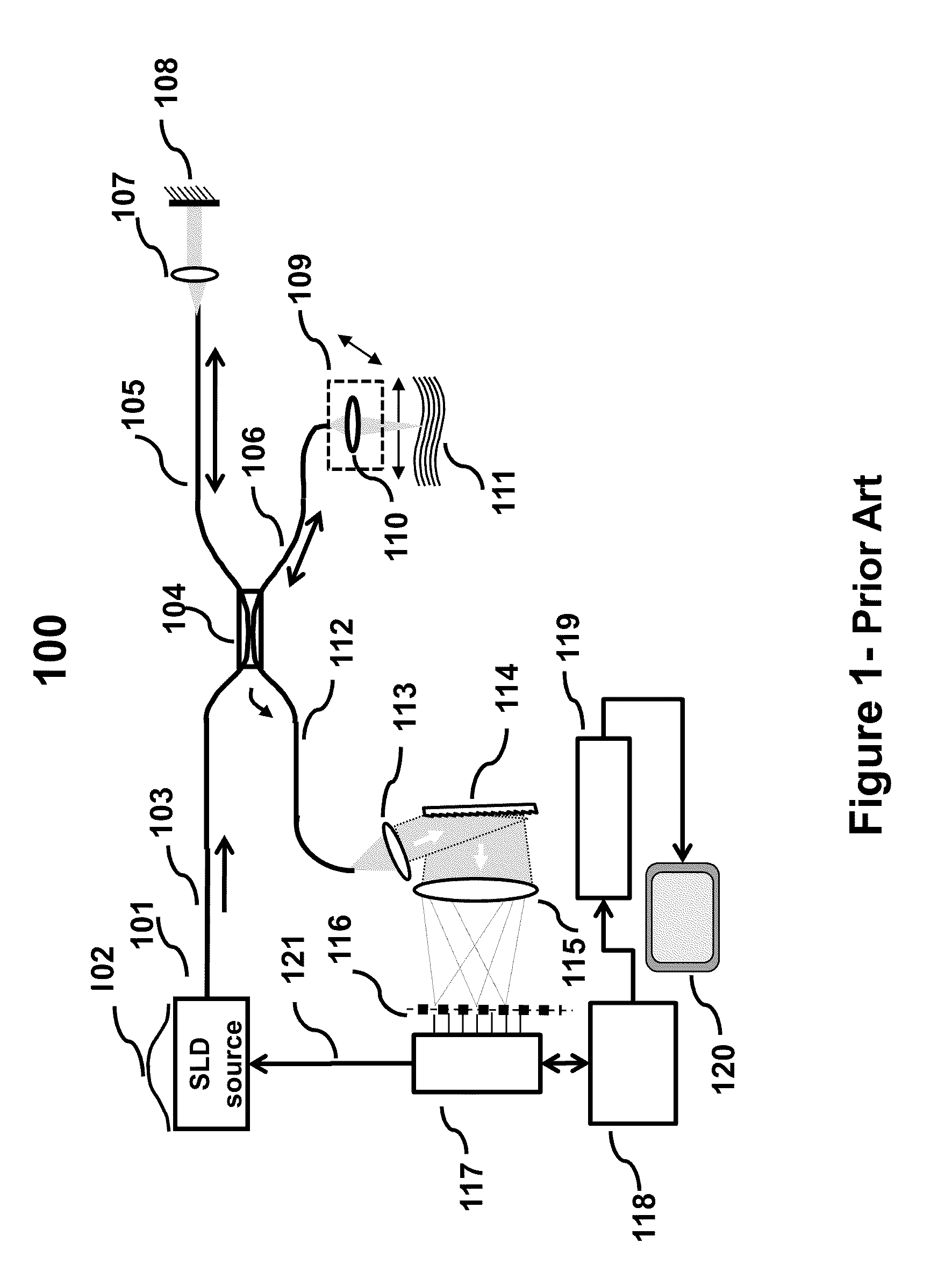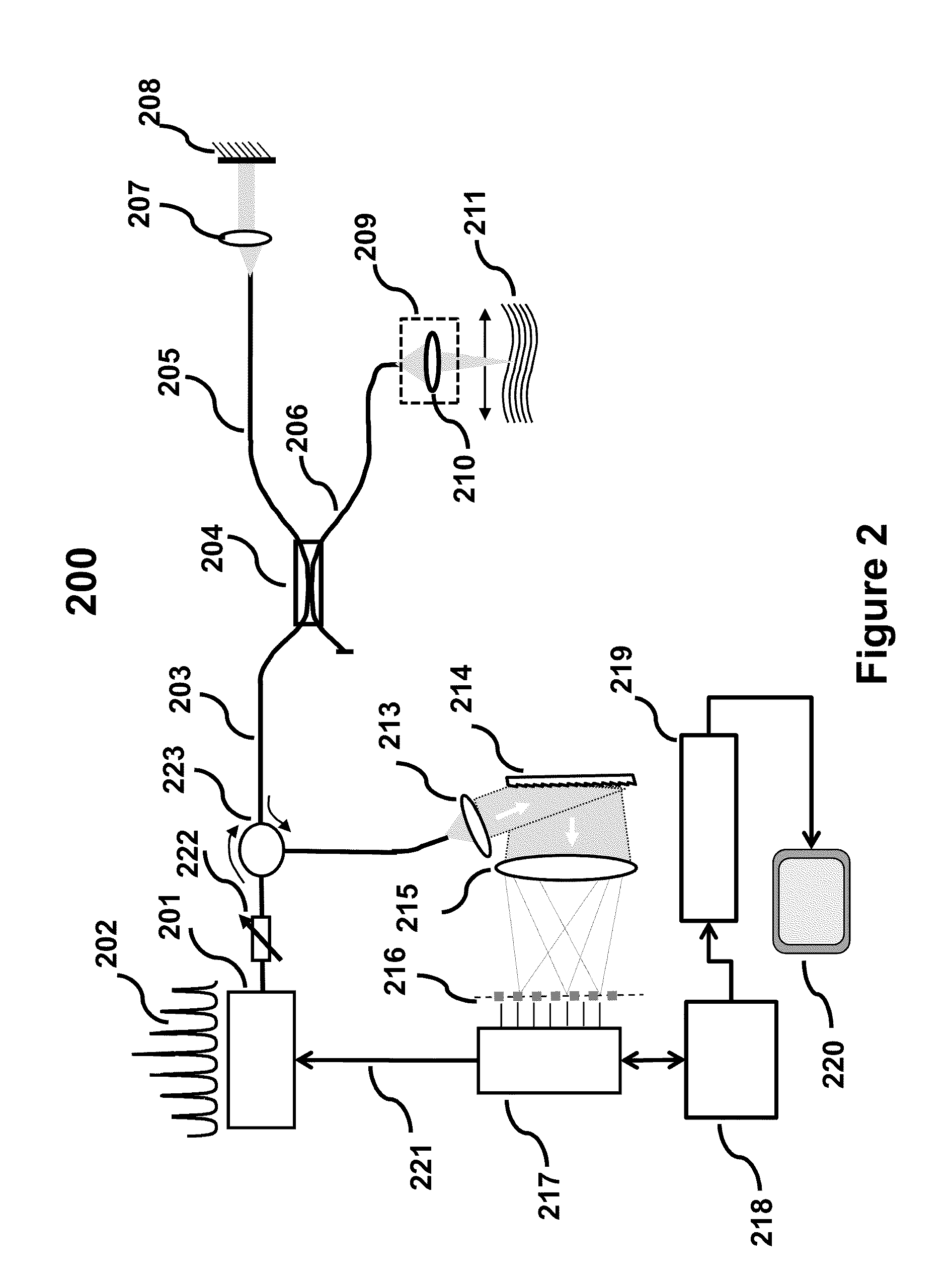Discrete Spectrum Broadband Optical Source
a broadband optical source and optical source technology, applied in the direction of optical resonator shape and construction, semiconductor lasers, instruments, etc., can solve the problems of low imaging speed, limited td-oct system limitations, and relatively low speed of mechanical scanning devices, so as to improve detection sensitivity, high output peak power, and high input optical power
- Summary
- Abstract
- Description
- Claims
- Application Information
AI Technical Summary
Benefits of technology
Problems solved by technology
Method used
Image
Examples
Embodiment Construction
[0032]For clarity and ease of discussion, each drawing figure shows a particular aspect or a combination of few aspects that may be implemented in an embodiment either alone or, in combination with one or more different aspects shown in other embodiments of the invention. Different aspects described in various embodiments may be combined without deviating from the principles of the invention. It is not be construed that an element not shown in any embodiment is precluded from the features shown in that drawing figure unless stated otherwise. Like elements in each drawing figure are represented by similar reference numerals wherever possible (for example reference numeral 201 in FIG. 2 represents an element that is identical or performs equivalent function, referred as 101 in FIG. 1) for ease of understanding, and to avoid repeated explanation.
[0033]Referring now to FIG. 1, there is shown a schematic representation of a prior art SD-OCT system 100 currently used in many medical imagi...
PUM
 Login to View More
Login to View More Abstract
Description
Claims
Application Information
 Login to View More
Login to View More - R&D
- Intellectual Property
- Life Sciences
- Materials
- Tech Scout
- Unparalleled Data Quality
- Higher Quality Content
- 60% Fewer Hallucinations
Browse by: Latest US Patents, China's latest patents, Technical Efficacy Thesaurus, Application Domain, Technology Topic, Popular Technical Reports.
© 2025 PatSnap. All rights reserved.Legal|Privacy policy|Modern Slavery Act Transparency Statement|Sitemap|About US| Contact US: help@patsnap.com



